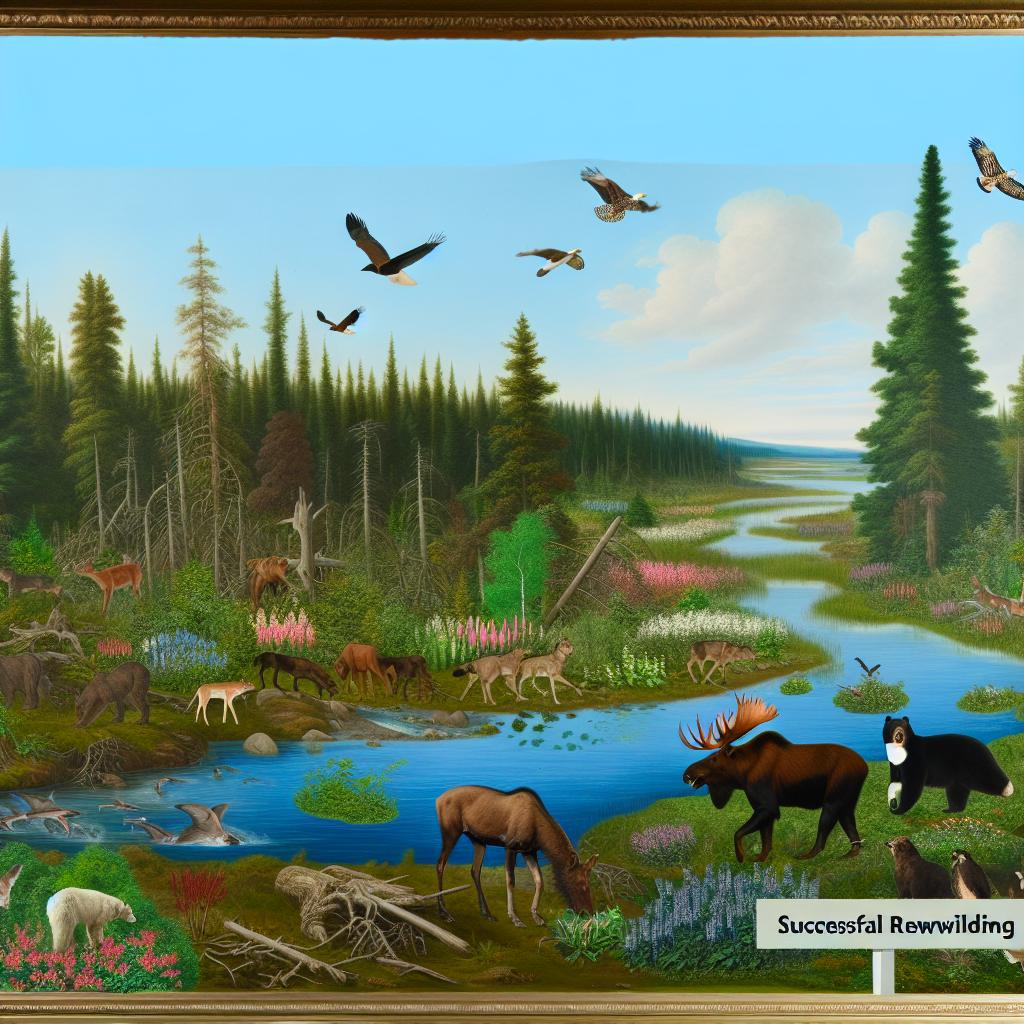
The Most Successful Rewildering Projects in History
The Concept of Rewilding
Rewilding represents a significant movement within ecological conservation circles, focusing on the reestablishment of natural environments and processes to areas suffering from human intervention. This conservation strategy is groundbreaking in its approach to ecological restoration, aiming to bring back the vibrancy and self-regulation of ecosystems that have deteriorated over time. By reintroducing keystone species and fostering environments where natural ecological processes can occur uninterrupted, rewilding endeavors to rejuvenate landscapes, enhance biodiversity, and restore balance within nature.
The process of rewilding revolves around the concept of letting nature take its course rather than micromanaging ecosystems. By doing so, it taps into the intricate relationships within ecosystems where each species plays a significant role, contributing to the landscape’s health and stability. The initiatives highlighted below illustrate varied strategies deployed across different regions, each geared towards ecological restoration and inspired by understanding specific regional ecosystems.
Yellowstone National Park, USA
One of the most celebrated success stories in the rewilding domain is found within Yellowstone National Park. The landmark introduction of gray wolves in 1995 marked a pivotal moment in conservation efforts. This endeavor was driven by the need to address the overpopulation of elk, which had dramatically altered the park’s landscape due to excessive grazing.
The Impact of Wolves
The reintroduction of wolves had an immediate and profound effect on the park’s ecosystem. The predation pressure on elk populations led to a notable reduction in their numbers. Consequently, the newfound restraint in grazing habits facilitated the natural regrowth of aspens and willows, heralding a resurgence of shrubbery and tree cover. This re-established habitat conditions that supported other species, significantly enhancing biodiversity.
The cascading effects of reintroducing wolves further extended to beavers, which also returned in greater numbers. Beavers thrive in habitats with healthy tree growth, using trees to construct dams and ponds. These actions by beavers enhance wetland conditions, ultimately nurturing a diverse range of aquatic and terrestrial species.
Alladale Wilderness Reserve, Scotland
The Alladale Wilderness Reserve serves as a beacon of rewilding in the United Kingdom. Situated in the heart of the Scottish Highlands, this project is focused on the revival of native flora and fauna, having long been affected by overgrazing and deforestation. A cornerstone of their mission is the reintroduction of native species, such as the red squirrel and the elusive Scottish wildcat.
Forest Regeneration Efforts
At Alladale, deliberate strategies have been employed to cultivate a thriving forest ecosystem. This involves removing non-native and invasive plant species and replacing them with native species. By fencing certain areas, young plants are protected from deer, which gives them a chance to grow undisturbed. Over time, as these trees mature, they form a more dynamic forest environment capable of supporting a wide array of wildlife.
The regeneration efforts have also included reshaping land usage, encouraging natural water flow patterns, and monitoring ecological changes. These measures support the proliferation of various habitats, making the area a stronghold for diverse wildlife and allowing nature to manage itself without human interference.
Eastern Iberian Lynx Recovery Project, Spain
The Iberian lynx, once on the verge of extinction, has become a symbol of hope thanks to concerted rewilding efforts in Spain. Habitat destruction and a sharp decline in the rabbit populations, upon which the lynx predominantly preys, left this iconic species in danger. The recovery project has undertaken comprehensive measures to reverse these conditions and ensure a stable environment for lynx proliferation.
Lynx Reintroduction & Conservation
Conservationists have worked to recreate environments where lynxes can thrive. This includes reestablishing prey populations and reconstructing habitats that offer ample cover for hunting and breeding. In strategic locations, such as the Sierra de Andújar, dedicated breeding centers have been established to boost lynx numbers before reintroducing them into the wild.
Alongside increasing lynx populations, measures to mitigate threats such as road mortality have been rolled out, including wildlife overpasses and roadside fencing. As a testament to the effectiveness of these strategies, the lynx population has seen a noticeable upswing, underscoring the importance of focused and sustained conservation initiatives.
Great Fens Project, United Kingdom
The Great Fens Project sets an ambitious blueprint for large-scale habitat restoration in the United Kingdom. A collaborative effort with a 50-year vision, the project focuses on uniting fragmented landscapes into a cohesive and expansive wetland area.
Restoring Wetland Ecosystems
Central to the project is the restoration of ecosystems that were previously transformed for agricultural purposes. By managing hydrological features, reinstating traditional water flow patterns, and reintroducing native vegetation, the Great Fens Project seeks to revive these vital habitats.
The resurgence of wetland conditions has fostered the return of numerous bird species and aquatic organisms. As these species settle back into their reclaimed habitats, they reaffirm the fecund nature of the restored wetlands and highlight the profound impact habitat restoration can have on biodiversity.
Conclusion
Rewilding has emerged as a cornerstone of contemporary conservation strategy, illuminating the path to ecological renewal by prioritizing the resilience and interconnectivity inherent within nature. The stories of success, whether from the fertile grounds of Yellowstone or the revitalized wetlands of the Great Fens, showcase how strategic interventions can breathe new life into degraded environments.
These examples serve not as isolated achievements but as paradigms for future conservation efforts. By embracing the guiding principles of rewilding, it is possible to heal the planet’s landscapes and unlock a cascade of ecological, cultural, and economic benefits worldwide. As more regions embark on similar initiatives, they contribute to a global movement toward sustainable and holistic environmental stewardship.